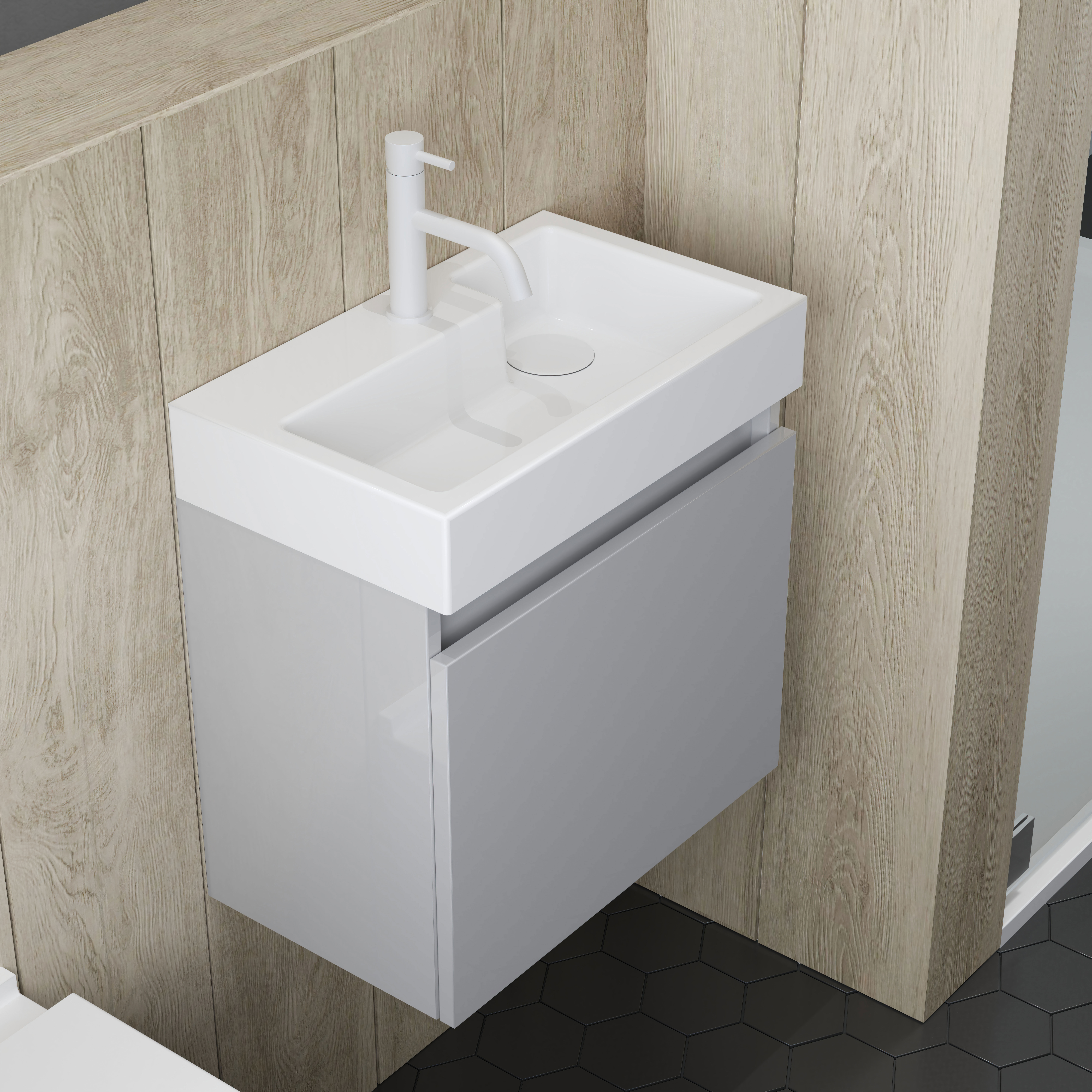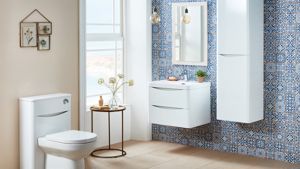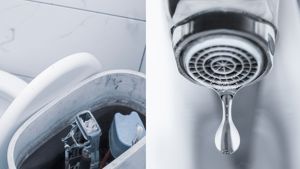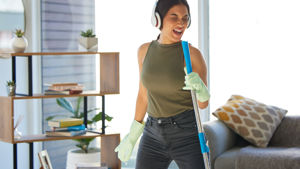As we wave goodbye to winter and welcome spring, many of us will be looking at deep cleaning our homes in preparation for the warmer months.
March is the most popular month for starting your spring clean, with temperatures beginning to pick up and improvements with the weather.
While some areas of the home are relatively easy to clean, our bathrooms require special attention.
So, if you’re looking to deep clean your bathroom around the spring equinox, here are the common areas worth getting some extra attention.
Eliminate odours from your toilet
Get a head start by working on the toilet first. Squirt toilet cleaner around the toilet rim and leave it to work its magic while you get on with all the other jobs.
Once the cleaner has been in the bowl for a minimum of 10 minutes, return with a stiff-bristled brush and give the bowl a good scrub, then flush.
To neutralise any remaining odours, pour a cup of bicarbonate of soda down the bowl (ideally, once a week) or fit an in-cistern cleaner to sanitise it after every use. Wipe the handle with disinfectant and leave it to work for five minutes before drying. Don't neglect your toilet roll holders either, a quick wipe can make the world of difference!
Wondering about any strange noises in your bathroom? Here's five bathroom sounds you should never ignore!
Spruce up your sink
Studies have suggested that the most contaminated area of our bathrooms is typically the bathroom sink. When you flush the toilet after use, the germs are “flushed out” into the bathroom environment, with the maximum germ deposit happening on the sink.
It is imperative that you close the lid of the toilet seat before flushing, so that the chances of the bacteria being deposited on other elements inside the bathroom is minimised.
Regularly rinse out the sink and dry it with a soft cloth after every use and do a quick cleaning daily to prevent soap scum and grime from building up.
Read all about the latest bathroom trends in our 2024 trends report.
Bathroom taps often develop stubborn limescale over time, especially if you live in an area with hard water. Lemons can perform miracles when it comes to removing limescale because of their acidic nature and will leave your kitchen tap sparkling clean.
Simply rub the flesh of the citrus fruit on to chrome taps or faucets and rinse with clean water. Ensuring you rinse the tap with water afterwards is a step, otherwise you’re at risk of eroding the finish on your tap with the lemon residue.
Another handy tool you may have to hand is whitening toothpaste and an old toothbrush. Similarly to lemons, these can be used to clean calcified limescale crust from taps.
Additionally, to keep drains running freely, pour a cup of soda crystals followed by boiling water down the plughole. This will help clear any lingering soap scum and banish odours, too. Remember to wear rubber gloves to avoid skin irritation!

Get smile-worthy shine from your mirrors
With the lighter days ahead of us, you may find the light hitting your bathroom mirrors and catching some leftover streaks or grime that have gone unnoticed during the darker months.
Start by cleaning the frame of your mirror, removing any lingering dust with a soft microfibre cloth.
You can either use a cleaner that’s specifically formulated for glass, or create a solution at home of vinegar and water, which can actually prevent your mirror from steaming up while you shower. Spray the mixture directly on the glass and let it sit for a minute before wiping off.
For best results, we recommend wiping in a tight S-pattern from top to bottom, making sure to cover the entire surface area of the mirror with just one swipe.Try not to go backward on an area you've already wiped.
Revive your radiators
Dust, fingerprints, and in some cases rust can affect your radiators and towel rails, therefore it’s important to stay on top of cleaning them.
Sweep the outside with a slightly damp dusting cloth, then, dislodge dust from the inside using a radiator brush.
If you have chrome radiators, gentle cleaning is very important as they are not as hard-wearing as stainless steel. Mild detergents like soapy water are best to use and can get a bright mirrored appearance again.
To tackle any rust spots, a solution of lemon and vinegar can achieve a perfect result. Because of acid in white vinegar, the rusts will disappear easily by rubbing gently.
Another trick is using aluminium foil, especially on chrome surfaces, that can clean without causing damage to your radiator. Make some rough balls with the aluminium foil, then place in a bowl of clean water before rubbing on the rusted spots on your radiator. The chemical reaction between the two materials will cause the rust to disappear and the aluminium can protect the radiator from rusting in the future.
Brighten your bath
Best practice is to rinse the bath straight after a soaking as left-over bath products like bubble baths and oils are tough to remove once dried on. To tackle any tidemarks or built-up grime, spray liberally with a bathroom cleaner and leave for at least 15 minutes before wiping and rinsing.
If your tub is very dirty, fill it with warm water, add some scoops of washing detergent and leave it overnight. Rinse thoroughly before bathing.

Unclog your shower head
Often overlooked during the regular bathroom cleans, our shower heads can be prone to blockages and build up of limescale from the consistent contact with hard water.
Again, vinegar is the best solution to tackle your shower heads.
For handheld shower heads, remove the showerhead from the hose, but be careful not to lose the rubber washer when you do, as this stops water from leaking at the joint. Place the showerhead in a bucket or container and cover with white vinegar before leaving to soak for at least 30 minutes. Rinse with water and use an old toothbrush to remove any remaining limescale. Reattach the hose and turn on the shower to flush out any remaining limescale.
To clean fixed shower heads, simply pour a solution of half distilled vinegar, half water into a plastic bag and fasten it over your showerhead with an elastic band. Make sure all of the holes are immersed in the liquid. After an hour, remove the bag and run the shower on hot to flush the showerhead through.
For any clogged spray holes that are still blocked, you can use a needle to remove any lingering dirt.
Say no to a smelly bin
Despite regularly emptying it, many of us can overlook giving our bins a deep clean. Hose it down in the shower after emptying to get rid of product residues and dirt, before wiping the bin inside and out with disinfectant.
To freshen the inside of the empty bin, add some bicarbonate of soda before spraying with disinfectant and wipe dry.
Need more cleaning advice? Head on over to our blog's homepage and search for what you need.







